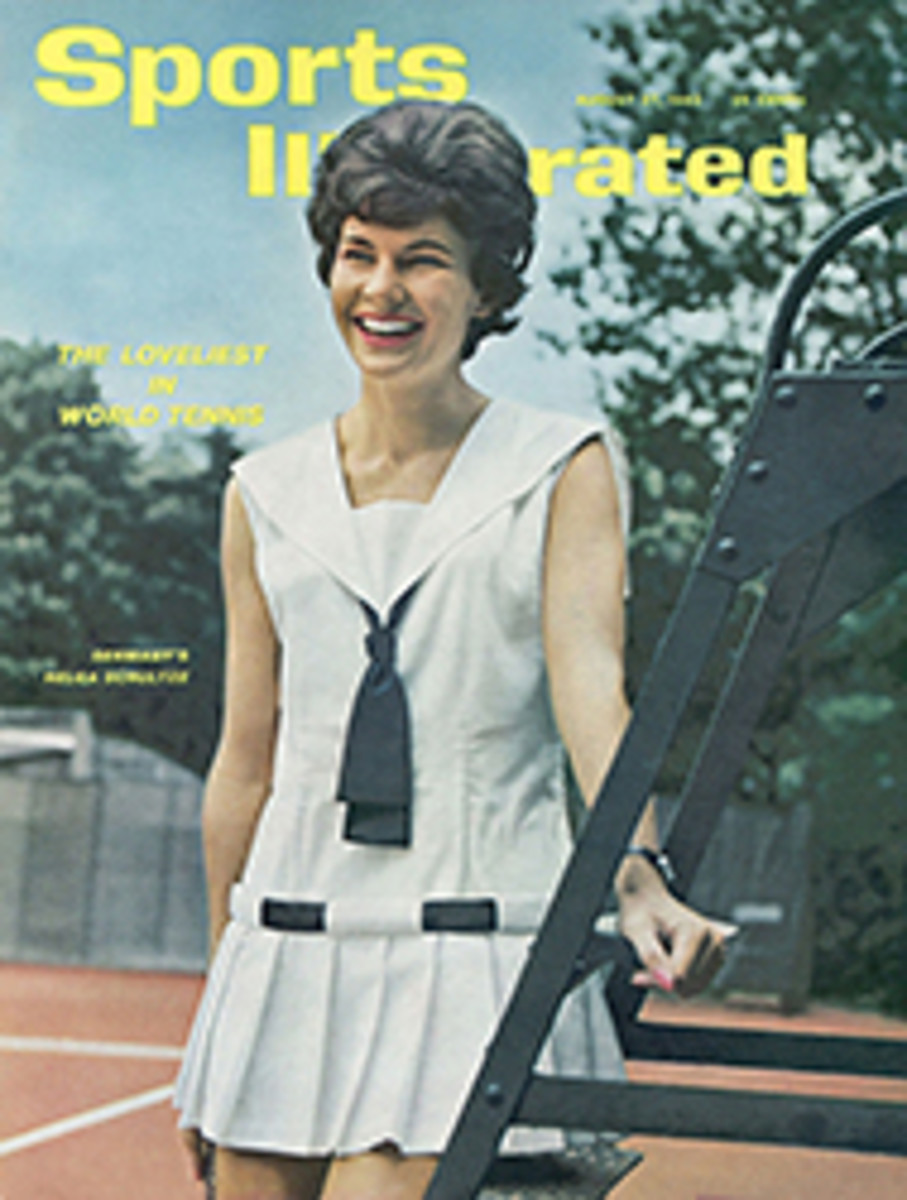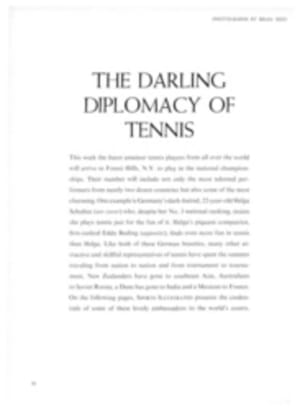
To stay thin: eat canard à l'orange
The conscientious epicure is a man who all too often finds himself trapped between two fires: the flame of his desire to sample the great dishes of many countries and the slow-burning inner fire caused by the calories he consumes. How much is too much? If he asks himself the question he will get no satisfactory answer, for reference books that list the calorie content of a baked Idaho, say, or steak medium rare are silent when it comes to gourmet food.
Originally, calories were computed by placing foodstuff inside a small bomb which was then filled with oxygen at high pressure and submerged in water. The food was then set on fire and burned to ashes. The temperature of the surrounding water was measured, and the amount of heat required to raise the temperature of one kilogram of water one degree centigrade was designated a calorie.
Such a method seems hardly suitable for canard à l'orange, and no one wanted to go to the trouble of cooking a really great gastronomic dish only to burn it to a crisp in a hermetic explosion for the sake of science. Fortunately, calorie counting has become a less violent affair. A dish, whether as complicated as canard à l'orange or as simple as steak, doesn't have to go into a bomb anymore, and calorie counts are now usually made from statistical tables based on food analyses.
Calories have taken on a somewhat sinister meaning in the popular mind; they are now generally considered as indicators of how fat you are going to get if you eat certain foods rather than how much energy those foods can give you. Thus, the poor gourmet sits on the horns of a dilemma, contemplating on the one hand the joys of gastronomy and on the other the price he must pay.
Let him take comfort now in certain facts. For one thing, when gourmet foods are counted up for calories, they turn out to be pretty much like any others in their capacity to nourish in just the right amount or, if carelessly handled, to overnourish. It would be difficult to eat a gourmet meal with greater calorie content than that of a good old home-cooked dinner consisting of baked ham with black-eyed peas and candied yams, followed by a dish of ice cream and cake for dessert.
Some foods, which because of their delicacy are associated with gastronomy, are almost Spartan in comparison with so-called plain foods. Abalone has 240 calories for half a pound, whereas half that amount of simple spaghetti will provide you with the same number of calories. Caviar—the best black Russian king—comes 75 calories to a tablespoon; a single cup of ordinary ginger ale counts 150, and a chocolate malted will set you back 640. Even Jell-O has 100 calories to a helping. That great and extremely rich delicacy, p√¢té de foie gras, contains 30 calories per teaspoon. You can get 40 just by eating half a handful of stale crackers while waiting for your drink in the local bar.
Equipped with a knowledge of the caloric content of the food he loves, what can the gourmet do to offset its waistline-building qualities? Since calories are, after all, measurements of energy, it would seem that the expenditure of energy should neutralize them. And, up to a point, it does. New York has at least one confirmed gastronome who has figured out a system that seems to work. It is simplicity itself: he opposes eating with exercise, and usually manages to come out even.
Thus, on almost any evening, this gentleman can be seen, dressed in a black tie and a dinner jacket, a distinguished and very fit fiftyish, moving along at a steady dogtrot, head high, arms bent and thrust forward, spring in his toes, on his way to his favorite French restaurant. About two hours later, back he comes, bounding along merrily in the direction of the evening's nightspot.
On what he calls his "running nights" this man is all set for a high-calorie dinner: smoked eel (385), entrecôte à la moelle (375 for the steak and 175 for the marrow) with pommes gaufrettes (540), a half bottle of Gevrey-Chambertin (180) and perhaps a chocolate mousse (400). He knows that 20 minutes' running each way will take care of about 850 calories. If he has really overdone it, he will perform an hour of the twist, which, along with competitive rowing, reaches one of the highest calorie-consumption figures science has been able to calculate. Thus, by the time he retires, he may have expended nearly 2,000 of the 2,055 calories he took in.
There are days when he walks in a leisurely fashion to the restaurant of the evening, plays bridge after dinner and then takes a cab home. On such an evening he eats an excellent meal in reasonable amounts—six cherrystones (65), chicken tarragon (250) with watercress (3), a piece of Pont l'Ev√™que (70), preceded by a Martini and two Triscuits (140 plus 40) and accompanied by half a bottle of Pouilly-Fumé (175). Total: 743 calories.
When the calorie intake is too high, whether from tournedos Rossini or cheeseburgers, the excess can be taken care of in any number of ways. Sweeping the floor of the restaurant, for example, will consume 84 calories an hour, and washing the dishes and ironing the table napkins will use up 59 an hour each. Listening to a lecture on physical fitness does not help much (only 13 an hour), but riding a bicycle to the lecture and back will use up 180 to 300 calories an hour, depending on the hills. If you lecture on the subject yourself for an hour (without gestures) it will cost 85 calories. Or one can work at a hobby: violin playing at 46 an hour, bookbinding at 81, carpentry at 180. Swimming burns from 300 (breaststroke) to 700 (crawl). Rowing, running and twisting are the great calorie consumers, burning off around 1,240 calories an hour, and mental work is the least helpful (only 7 or 8), even less helpful than just standing still (20).
[originallink:10512031:42472]
ILLUSTRATION

